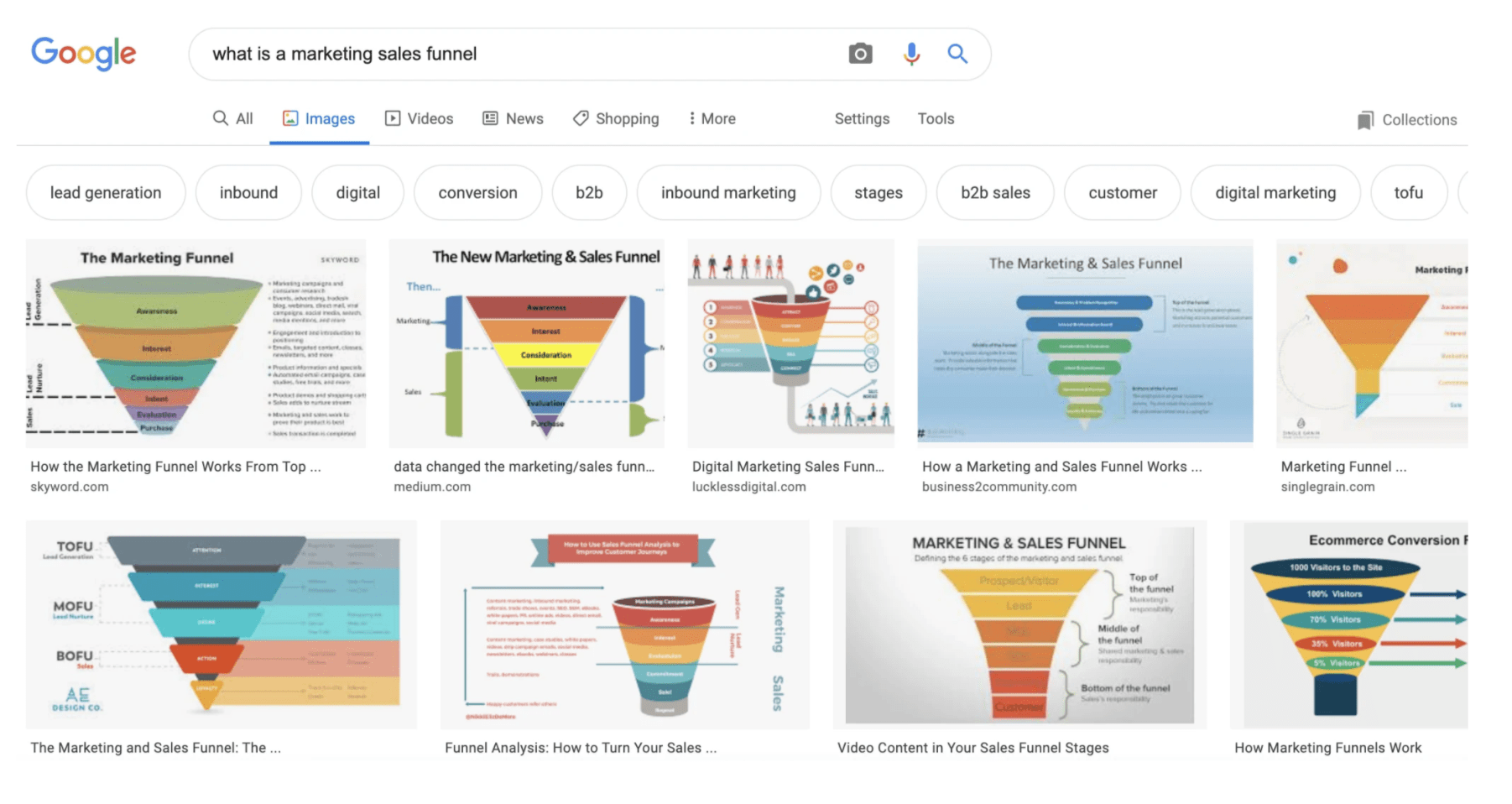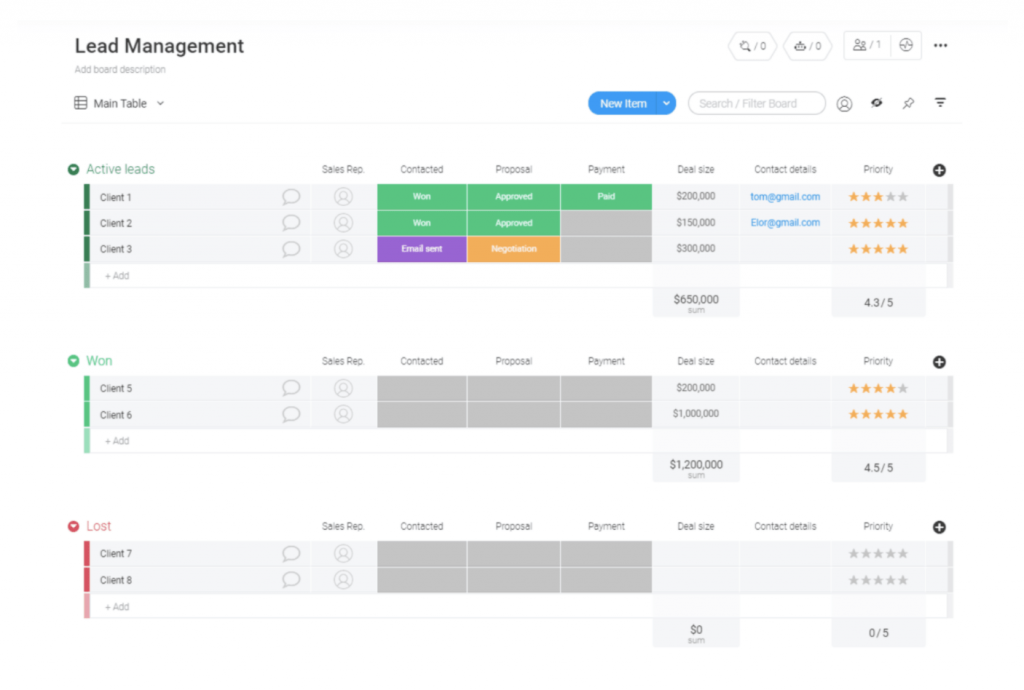
If you do any cooking, a funnel is a must-have kitchen utensil. With a large, open, top that decreases in size to form a small(er) opening, a funnel allows cooks to transfer liquids (or small grains) from one source to another – without making a huge mess.
There are many other uses for a funnel (and many other industries that use them) however, for the purposes of this article, we are going to focus on the marketing and sales funnel.
We’ll go into a bit more detail about exactly what a funnel is (including its history), breakdown several steps to optimise your funnel, and share some of the best tools in the market for managing your funnel.
First, some history.
The sales and marketing funnel — originally (and sometimes still referred to as the purchasing funnel) was first introduced to the world by a gentleman named E. St. Elmo Lewis in 1898.
Besides having a pretty cool name, Mr. Lewis’s idea evolved into the AIDA-model in 1924 thanks to William W. Townsend.
AIDA (Awareness, Interest, Desire, and Action) is the foundation for the original marketing and sales funnel.
Awareness: the buyer knows about (is aware) of your service/solution/product
Interest: the buyer has shown some level of interest via a landing page visit, a website click, or some other digital method (note: there are other “old school,” non-digital means of showing interest as well)
Desire: the buyer takes that interest to the next step by focusing their interest on a specific brand or service or product your company offers
Action: the buyer takes a specific action, moving them closer to becoming a customer
While sales and marketing funnel is the most common term, organisations refer to it as the customer funnel or the sales funnel or the marketing funnel or the conversion funnel.
The funnel has come a long way since 1898.
If you do an image search for the “marketing funnel,” you’ll quickly realise that most organisations have evolved the original AIDA concept into a word salad of other terms and concepts.

Interest is sometimes called consideration. Action is sometimes called conversion.
“Evaluation” and “purchase” are often tacked on after “action.”
Some expand the funnel to post-purchase and include stages like “loyalty” and “advocacy.”
Sales and marketing teams categorise each stage of the funnel into a few key groups.
A modern sales and marketing (aka, “conversion”) funnel often looks like this:
Traffic sources: This is the “pre-awareness” stage also known as how you get a prospect to become aware of your product or service, most often how they land on your website — via search, paid ads, referral traffic, social media, etc. Again, more traditional means can also serve as traffic sources (TV, billboards, bus advertising, and so on).
TOFU: The Top Of FUnnel is sometimes referred to as the “lead generation” stage. TOFU is traditionally the job of the marketing team to source (hopefully) qualified leads through content — blog posts, advertising (paid, earned), videos, infographics, whitepapers, case studies, etc.). Note: Depending on the size of your organisation and/or how your teams are structured, sales reps may also dip into the TOFU stage.
MOFU: The Middle Of FUnnel is sometimes referred to as the “lead nurture” stage and is often a shared responsibility of both marketing and sales. MOFU is where email and social media and phone call sequences live. It’s the stage where you have a “warm” (or even better, hot) lead and it’s your job to keep moving them down the funnel — keep interest high until just before they speak with a sales rep, demo your product, and move to BOFU.
BOFU: The Bottom Of FUnnel is sometimes referred to as just sales. For the most part, Marketing is out of the picture during the BOFU stage. It’s all sales, all day. In some organisations, this is when a lead moves from marketing to a BDR (Business Development Rep) for discovery calls. In other companies, the BOFU is when a warm lead becomes a hot lead and the BDR transfers the account to an AE (Account Executive) to “bring the deal home.” This stage often includes a phone and/or video call, a demo, a pilot/trial (in some cases), and eventually a new account!
Re-engagement: Not pictured, but super-important, this is a space reserved for lost leads — those accounts that turned into “closed-lost” in CRM-speak. This stage is when marketing takes over again and nurtures leads through retargeting ads, email marketing, and other means of keeping awareness levels high so if/when this prospect is ready (have budget, sudden need, timing is right), sales can re-engage and move then back down the funnel.
Historically, there was just one path — and a single entry point — to move through the sales and marketing funnel.
The “one path, one entry point” days are officially over.
Buyers are no longer sitting around, waiting to be marketed to. They are doing their own research, often coming into a sales conversation knowing much of what they want (and don’t want) in a product or solution.
In some ways, this makes the job of sales and marketing teams easier (less educating the buyer). In other ways, it’s more challenging (more debunking myths and incomplete/wrong information).
Funnels help organisations stay, well, organised. Funnels ensure everyone on the team knows their individual – and collective — responsibilities with prospects and leads and eventually new customers.
But creating a lead generation process (while leveraging a funnel) is easier said than done. Check out this article about how to create a lead generation process, in 5 steps:
#1: Turn traffic into leads
#2: Qualify new leads
#3: Nurture and manage new leads
#4: Send leads to sales
#5: Evaluate your lead generation process and iterate
Even with a quality CRM, the above process can be challenging to say the least.
We love monday.com’s lead management templates. They’re totally customisable and ensure that your marketing and sales teams are on the same page throughout your lead generation process.

Even better? Once you tweak your lead generation template to fit your team, you can replicate it over and over (and over again). No need to keep reinventing the template wheel!
See for yourself. Get started by signing up for monday.com now.